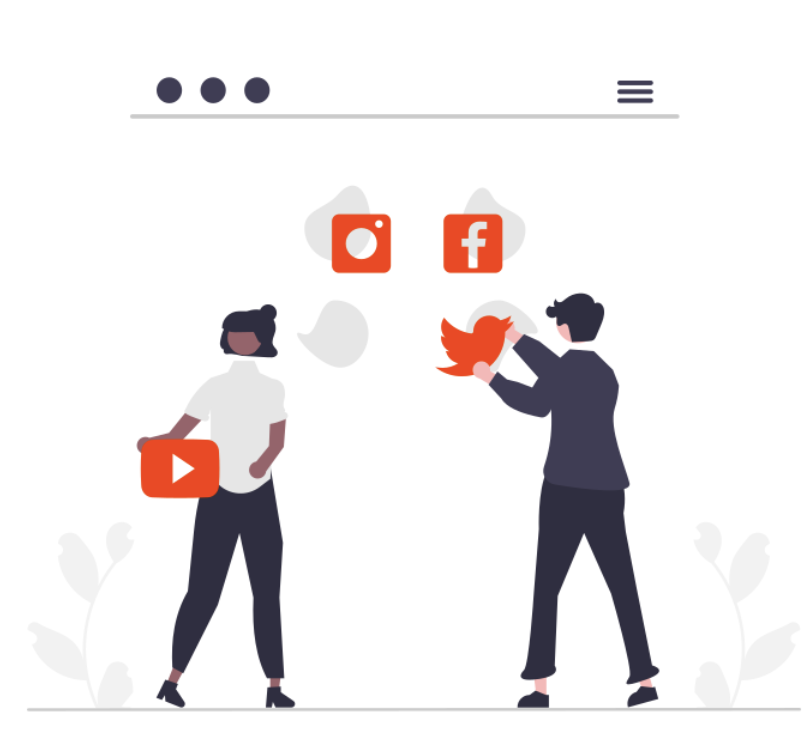Social media marketing promotes your brand on platforms like Facebook, Twitter, Instagram, and LinkedIn, helping to reach your audience, raise brand awareness, and build an online presence. You can create engaging content, connect with your audience, get leads, and drive traffic to your website. Done well, it builds loyal followers, boosts visibility, and grows your brand!
There are two types of social media: paid and organic social media. They have different goals and advantages, so it is essential to pick the right one for your business. Let’s discuss their differences in this blog to help you choose the best strategy for your brand.
Paid Social Media
Paid social media involves paying for adverts on social media platforms to promote a business, products, or services. This can include sponsored posts, display ads, video ads, and various other types of advertising. It lets businesses reach a bigger audience and target specific groups based on age, location, interests, and behaviour.
Businesses allocate part of their marketing budget to achieve goals like raising brand awareness, getting new leads, or selling more products. It can be cheaper and more focused than traditional adverts, helping businesses meet their marketing targets and stay competitive.
Benefits of Paid Social Media
Paid social media has several advantages for businesses:
1. Better reach: Businesses can target specific groups based on demographics and interests, expanding their audience beyond their usual followers.
3. Cost-effective: Ads on social media can be cheaper than traditional adverts. Businesses can set a budget for each campaign and only pay for clicks or views.
4. Better targeting: Ads can target specific groups of people with particular interests or backgrounds, improving marketing effectiveness and putting the business in front of eyes that matter.
5. Detailed stats: Paid social media provides valuable data on campaign performance, helping businesses make informed decisions to improve their marketing.
Most Common Platforms
1. Facebook: With over 2 billion monthly users, it’s the largest social media platform. Businesses can advertise through sponsored posts, display ads, and videos, targeting specific demographics.
2. LinkedIn: Known as a professional social network, it’s perfect for B2B businesses targeting specific industries or job titles. Ad options include sponsored posts and messages.
3. Instagram: Popular for its visual content, it’s ideal for businesses in fashion, beauty, and food. Ad options include sponsored posts, stories, and videos.
Organic Social Media
Organic social media is about sharing content without paying for ads and can be done through posts, stories, photos, and videos. It’s ideal for building connections with your audience and raising brand awareness.
Businesses use it to engage with customers, drive website traffic, and show they know their stuff. By sharing quality content and showing their personality, they can attract followers and increase visibility online.
Benefits of Organic Social Media
Organic social media benefits businesses in various ways:
1. Engagement: It allows businesses to interact personally with their audience, building stronger relationships and encouraging participation.
2. Cost-effective: It’s a low-cost method to reach desired audiences without ad spend by sharing compelling content.
3. Brand identity: It helps shape a consistent brand voice and personality across platforms, making businesses more memorable.
4. Loyalty: Businesses can foster customer loyalty and encourage word-of-mouth referrals by engaging with their audience.
5. Insights: It provides valuable information about audience preferences and behaviours, helping businesses refine their social media strategies for better results.
Most Common Platforms
Businesses can use various social media sites for organic marketing, but here are a couple of the most popular:
1. Facebook: It’s the largest platform, with over 2 billion monthly users. Businesses can post updates, share photos, and target specific groups based on demographics.
2. Instagram: Known for photos and videos, it’s loved by many. Businesses can showcase their products with visuals and engage followers using features like Stories and IGTV.
3. X (formerly Twitter): Ideal for real-time interactions with the audience. With many users and hashtags, businesses can quickly engage with a broader audience and participate in trends.
Summary of Organic and Paid Social Media
In summary, organic and paid social media help businesses reach marketing goals and gain online visibility.
The difference between organic and paid social media is that organic social media allows businesses to engage with their audience in a personal way and is cost-effective, attracting interest without heavy spending. On the other hand, paid social media expands reach beyond current followers and targets specific demographics, often at a lower cost than traditional adverts. Paid social media is ideal for generating leads and driving traffic to your website.
Using both types is the most effective approach, enabling businesses to connect personally with their audience, boost their online presence, and achieve marketing objectives efficiently.
Pro tip: Social media marketing is ongoing, so keep putting in effort regularly. Try out different types of posts, targeting methods, and platforms. Always think about your audience and make sure your content is interesting, helpful, and valuable to them.
Looking for help with your social media marketing? Get in touch with TFA today to discover how we can help.
